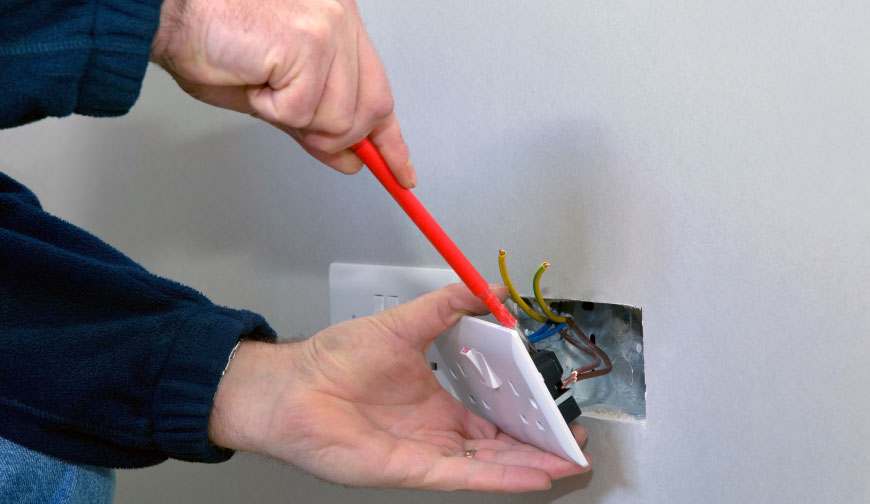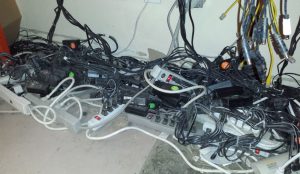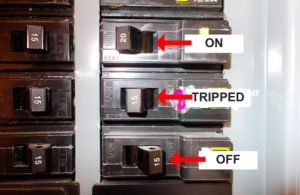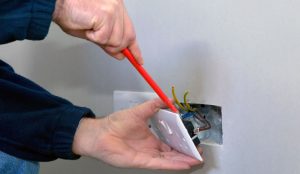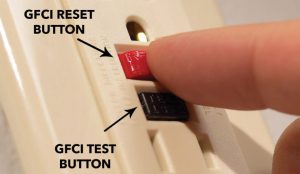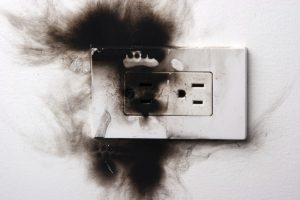Sometimes troubleshooting is easy and extremely obvious – like a switch that was forgotten about or the darn light bulb was just burnt out. You may even discover that a GFCI receptacle or breaker was tripped. There have been times when the tripped GFCI Plug was behind a pile of boxes in the garage and no one ever knew there was a plug present. Well, I could go on and on with stories about troubleshooting electrical wiring, but lets get to a method that could save you a lot of time, frustration and a bunch of money.
The method I’ve learned is an easy one, and you’ve probably already used it several times on other applications, here it is: The Process of Elimination Which Starts With Identification. The first step is to identify all the outlets/switches affected by an outage and then try to determine why.
Quick Checks just to make sure:
Is the Switch “On”?
Is the Light Bulb burned out?
Is a GFI Receptacle or GFCI Breaker tripped?
Is a Circuit Breaker tripped or a Fuse blown – If so find out why!
Safety First
Be sure not to work with energized wires or circuits. Identify the circuit and shut it off, then tag the circuit to keep it off. Very Important: If you don’t feel comfortable working on your electrical problem, please don’t take chances – call a professional electrician.
Here are some simple troubleshooting steps you can follow to try and narrow down your problem:
- Check Other Outlets: Verify if other outlets in the same room or nearby areas are working. If multiple outlets are not functioning, the problem may lie with a tripped circuit breaker or tripped GFCI. Locate the electrical panel in your home and check for any tripped circuit breakers. If you find a tripped breaker, reset it by flipping it to the “off” position and then back to the “on” position. Check if the outlet starts working again.
- If you discover the breaker is tripped and you reset it, then it trips again – you need to check all items that are plugged into that circuit. If an appliance draws more electrical current than the circuit can handle, it can overload the circuit. For example, plugging multiple high-wattage devices into the same circuit or using a power-hungry appliance on a circuit with other devices can exceed the circuit’s capacity. The circuit breaker, which is designed to protect against overloads, detects the excessive current flow and automatically trips to interrupt the power and prevent overheating or electrical hazards. This could also happen if the appliance or device plugged into that circuit has a short. you can troubleshoot this by unplugging everything from a circuit and then testing each item one by one.
- Test the GFCI Outlet: If the non-working outlet(s) is in a kitchen, bathroom, garage, or outdoor area, it may be protected by a Ground Fault Circuit Interrupter (GFCI) outlet. Look for nearby GFCI outlets and press the “reset” button. Sometimes, outlets are wired in series, so if one GFCI outlet trips, it can affect other outlets in the circuit.
- There are usually several outlets on the same circuit and we see problems in the beginning and end of this chain. Examine the non-working outlets for any visible damage, such as scorch marks, loose connections, or protruding wires. If you find any, it’s best to contact a licensed electrician for repairs.
- If none of the above help, call an electrician.
Remember we are always here to help!
If have a question or an electrical problem that we can help with click here to request a quote or give us a call. We are on hand for all your electrical installation and repair needs.

